-
Car Reviews
- All reviews
- Midsize SUVs
- Small cars
- Utes
- Small SUVs
- Large SUVs
- Large cars
- Sports SUVs
- Sports cars
- Vans
Latest reviews
- Car News
-
Car Comparisons
Latest comparisons
- Chasing Deals
It’s the longest-range electric car offered in Australia, but is Polestar’s most affordable 3 the one to buy?
Polestar has had a bit of a rocky start to life. A naming structure that doesn’t line up with typical rivals, software-related holdbacks and a struggle to turn profits. And yet, the China-owned, Swedish-headquartered carmaker turned out a cracker in the Polestar 3.
Based on high-quality SPA2 underpinnings with distinctive fastback styling and plenty of punch, the air-suspended Long Range Dual Motor version that lobbed first quickly became a Chasing Cars favourite — a thinking person’s alternative to the usual Germans such as the BMW iX, Mercedes-Benz EQE SUV and Audi Q6 E-Tron. It even scooped an award at our 2025 Car of the Year.

Adding another quiver to the Polestar 3’s bow is the new Long Range Single Motor (LRSM) on test. Not only is it $14,300 cheaper to get into than the twin motor while offering a similarly extensive option pack list, it also proudly claims the title of Australia’s longest driving range electric car, at least for the moment. With its 107kWh usable battery, its maker promises a whopping 706 kilometres of theoretical capability from a single charge.
The introduction of the LRSM for $118,420 brings the Polestar’s entry price closer to five digits, but as a large luxury SUV it’s definitely not about traditional value. See below a list of luxury SUVs and their WLTP combined driving ranges for context on where the Polestar 3 now sits.
Audi Q6 e-tron Performance 558km — $115,500
Polestar 3 LRSM, 706km — $118,420
Lexus RZ 450e, 395km — $121,059
Cadillac Lyriq, 530km — $122,000
Porsche Macan Electric 591km — $128,400
Mercedes-Benz EQE 300 SUV 446km — $136,60
BMW iX xDrive45 602km — $142,900
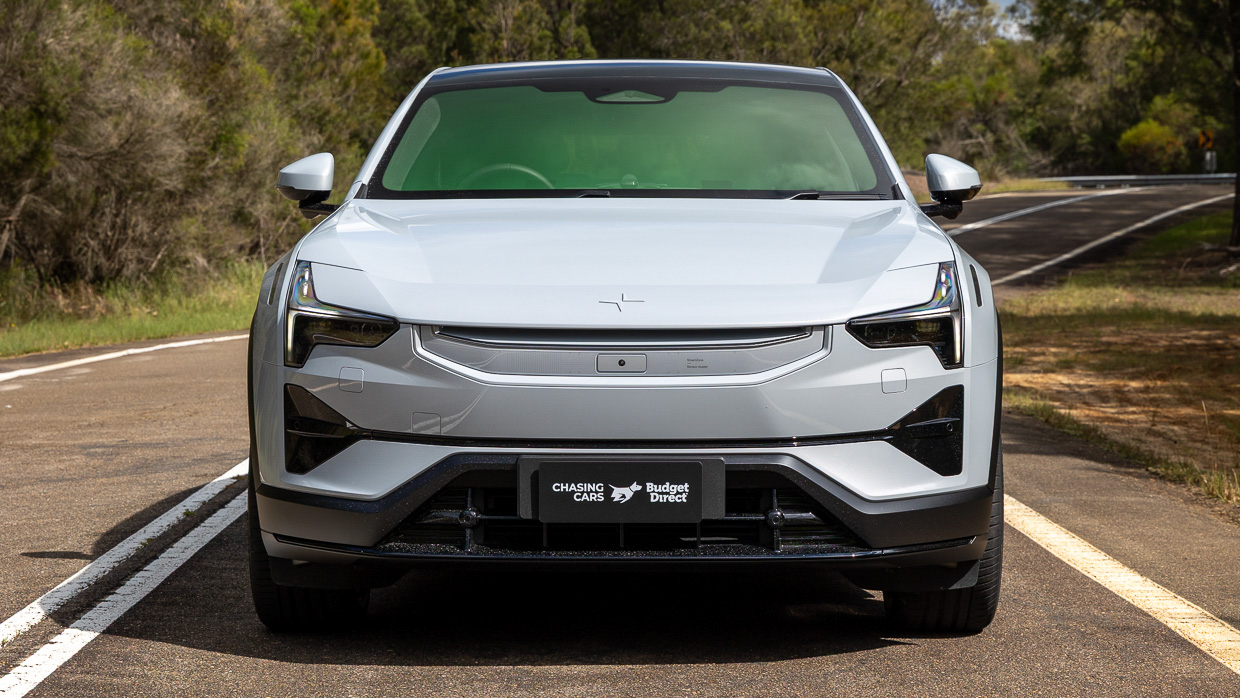
For your outlay, Polestar includes a healthy list of features but, keeping with the eco theme of the brand, there are no leather seats standard.
Naturally, a raft of option packs, colours and customisations are available. One of the key takes will be Polestar’s $9000 Plus Pack, which includes the active road noise cancellation, head-up display, heated rear seats, PM2.5 air quality sensor, soft-close doors, power-adjust steering column and the must-have 25-speaker Bowers & Wilkins sound system.

On top of the Plus Pack, our car featured the 1.3 Megapixel LED headlights ($3000) and Privacy Glass ($700) — both of which should probably be standard — plus attractive Magnesium paintwork and Charcoal coloured Bio-Attributed MicroTech upholstery.
The one option we’d suggest ticking is the sustainably sourced Nappa Leather upholstery, bundled with seat ventilation, which really amps the luxury feel of any Polestar’s cabin.
Polestar’s conception as Volvo’s tuning arm was a sporty one, and it continues to lean into its athletic roots even in its largest, most luxurious product. It really is impressive how dynamic this entry level Polestar 3 Long Range Single Motor is on the road, especially considering its 2.4-tonne-plus kerb weight.
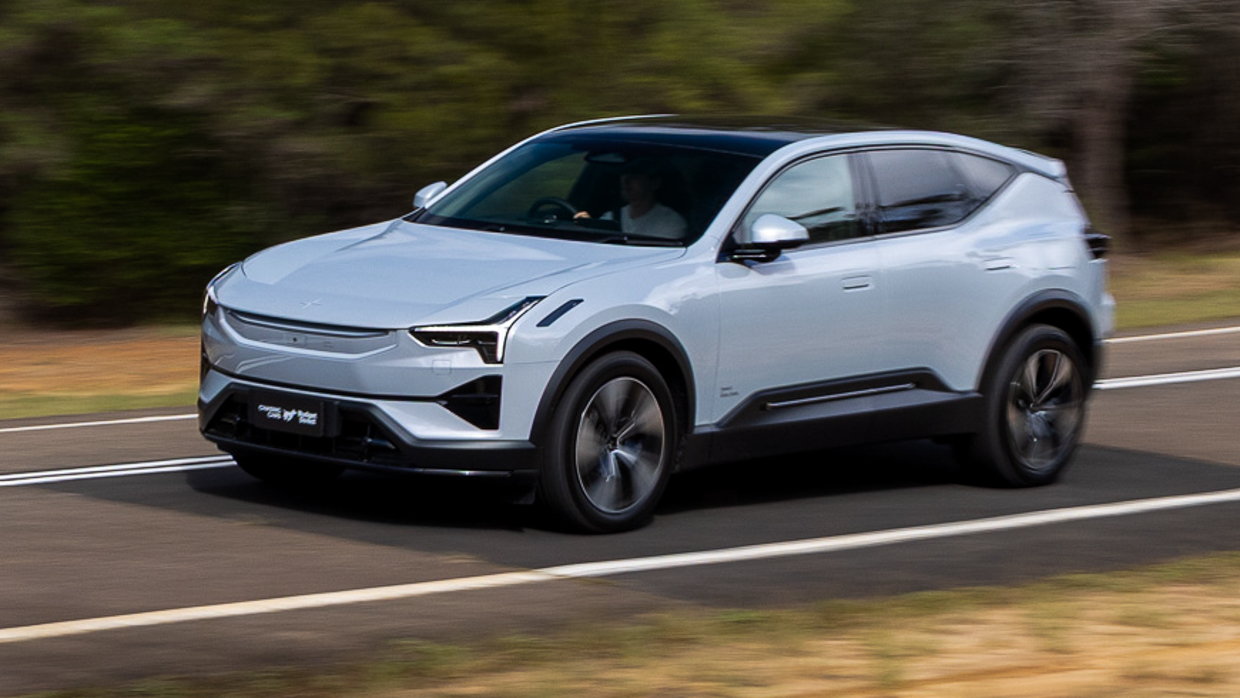
Sharp off-centre steering response (2.9 turns lock-to-lock) darts the 3’s nose in before the weight settles on the outside rear wheel. From here, you can start to steer the rear-drive P3 using the throttle, where deft ESC programming lets you get away with satisfying neutral steer.
Unlike the more expensive AWD Polestar 3, the Single Motor uses fixed-rate steel springs and frequency selective dampers for its double-wishbone front and integral link independent rear suspension.
The result is less sophistication in the ride quality department, with Polestar chasing dynamic excellence over magic carpet smoothness. Thanks to the trick suspension, the Twin Motor Polestar 3 irons out low-speed bumps and urban imperfections much better than this car while still keeping the large SUV well under control in the twisties.

Regenerative braking power can be adjusted through three settings in the Polestar 3, with Full being one-pedal mode and Off basically free-wheeling. Using the Half setting and arresting the Polestar 3 at traffic lights and stop signs with the firm and feelsome brake pedal was most pleasant.
The Polestar 3’s steering isn’t quite perfect, though, with a little too much weight around the straight-ahead for stress-free motorway driving. Additionally, the visibility — even though this Polestar has a rear window — is terrible, especially rear three-quarter. Even using the clear 360-degree camera, the Polestar 3 was tricky to thread into parallel parks.
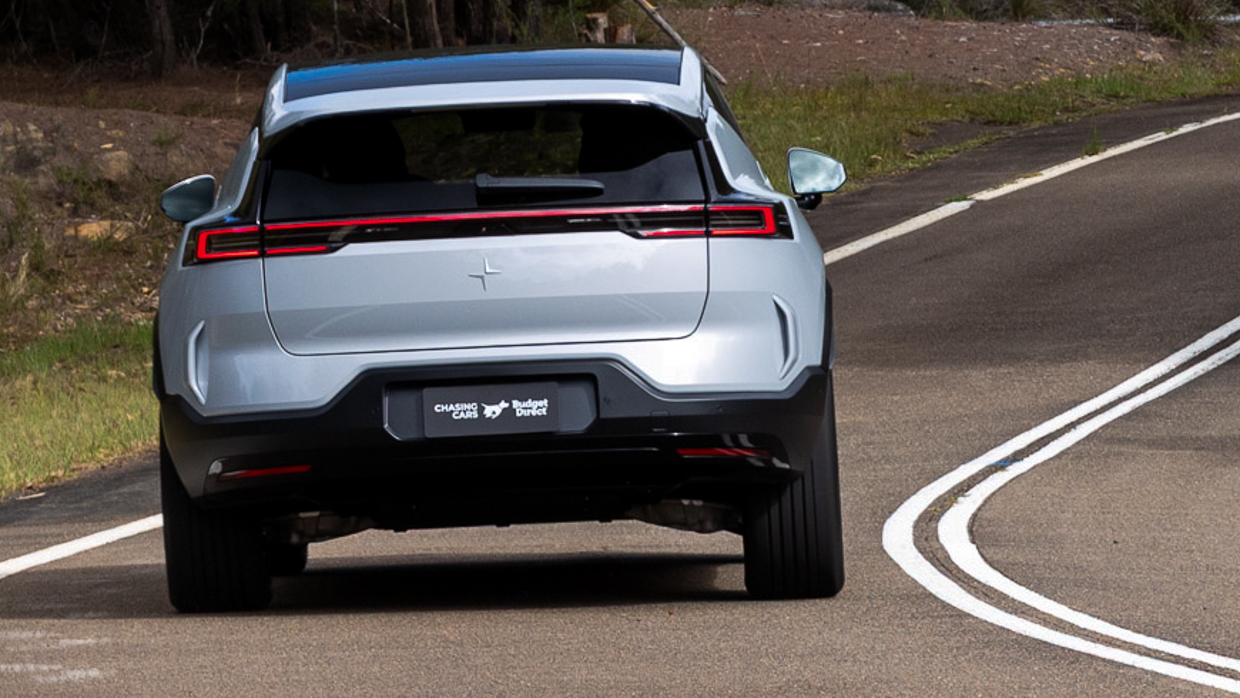
This is a cliche take, but the Polestar 3’s 220kW and 490Nm feel more mighty than the paper numbers, including the 0-100km/h sprint in 7.8 seconds, suggest. That said, it isn’t a fast car, and the extra spend on the Twin Motor’s added punch and more consistent ride feels worthwhile.
It’s a funny car to pigeonhole, the Polestar 3. The slinky, sloping roofline and long wheelbase give the appearance of a stretched, elongated monster but at 4900mm long, it’s actually shorter than a Toyota Camry (4920mm).
With a visually long bonnet, you might think packaging would be compromised but the Polestar 3 acquits itself well for passenger space. The second row has palatial legroom, though the centre seat isn’t ultra comfortable so this large SUV is best capped at a luxurious four passengers.
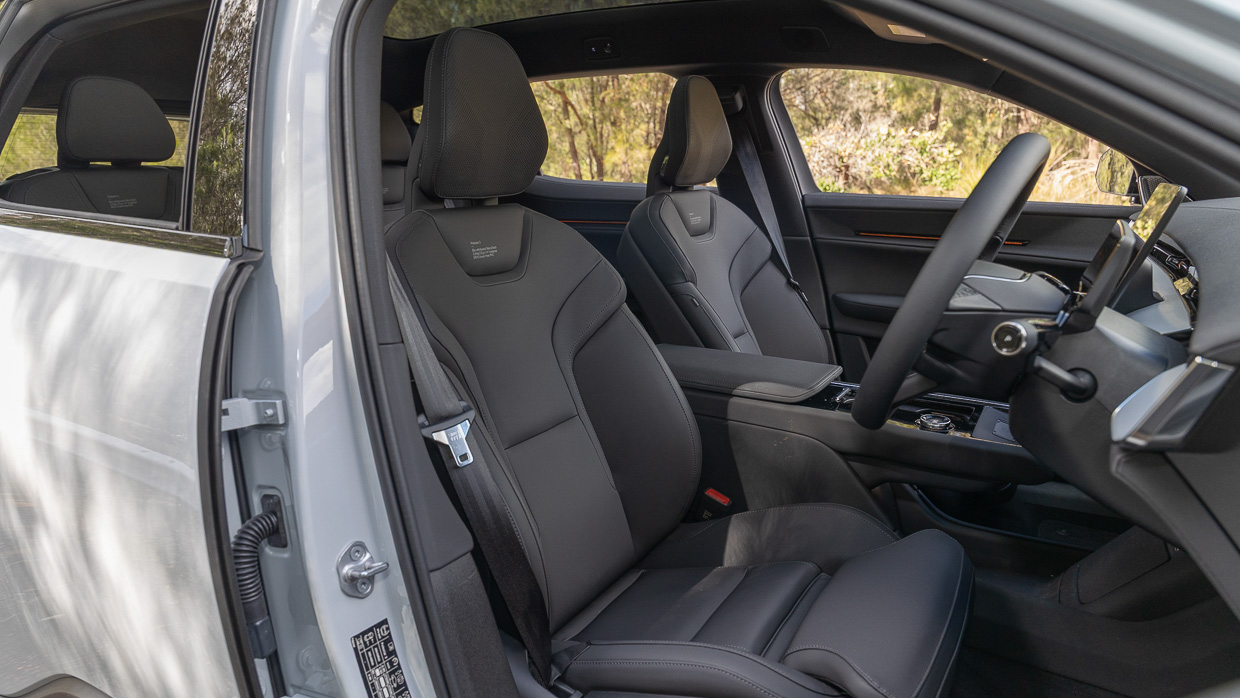

Plus pack-equipped cars like ours have heated rear seats, which is nice in winter. All P3s get a fold-down armrest with cup holders, air vents with a third climate zone and a huge glass roof, which we’re told is insulated yet still seems to let plenty of heat in. Not ideal, especially in Australia when combined with the warm bio-vinyl upholstery.
Polestar rates the 3’s boot at 484 litres to the seat tops, and the space is nice and long and square with extra space beneath the floor to accommodate charging cables. The second row folds relatively flat in a 40:60 split with a ski port. There’s a reasonable 32-litre frunk, too.


Really, though, the P3 is all about the front passengers. Broad design elements and a tall window line nestle you into the cabin, with a large number of warm and tactile materials upping the ambience.
There’s a surprisingly large amount of piano black and chrome in the P3, though, which feel out of sorts with the brand’s ethos, as well as being magnetic to fingerprints.

Almost all controls are garrisoned to the 3’s 14.5-inch central touchscreen, which runs Google’s automotive software as in all Polestar products — one of the big differentiators between Volvo, Polestar products and their Chinese-headquartered Geely cousins.
Where the Google software is usually faultless, we encountered some slow running in the Polestar 3, with several wireless Apple CarPlay drop outs and one instance of the screen becoming unresponsive.
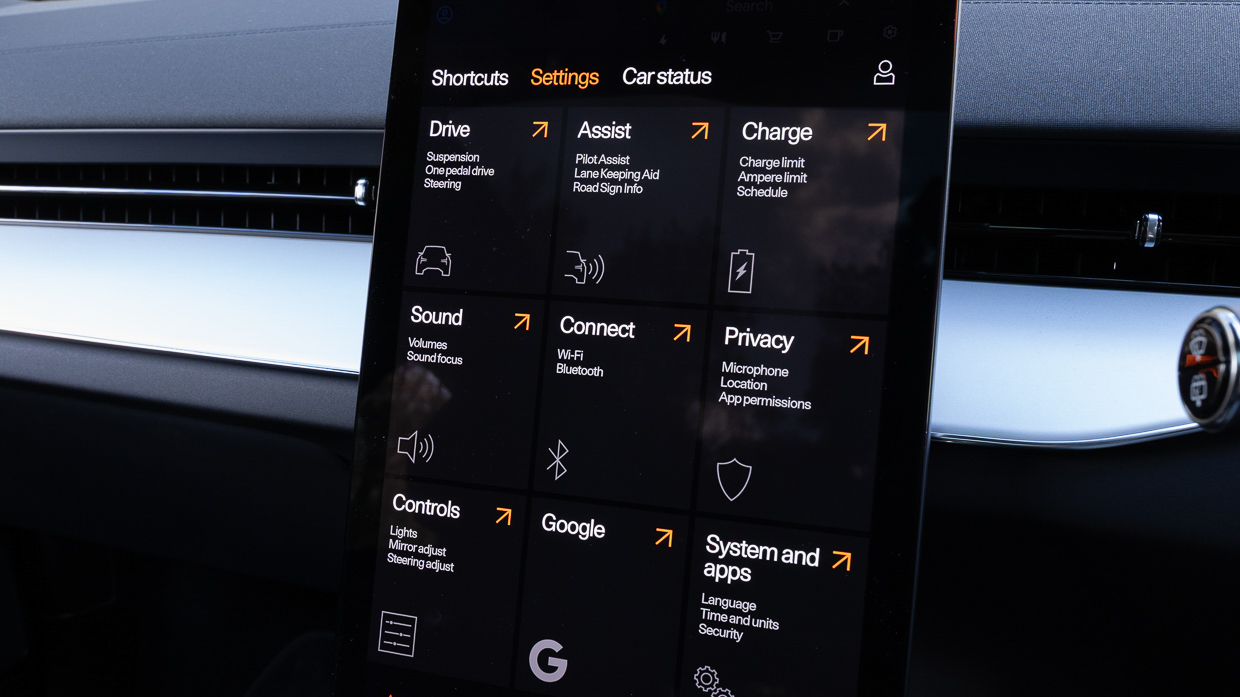
The tri-zone climate controls are somewhat persistent on the screen, even when phone mirroring, though to adjust programs and get back to Auto mode, a few taps on the screen are required. Oddly, you can only adjust the temperature in full degree increments, too.
Practicalities include a pair of cup-holders, a deep covered central bin, and rubberised door pockets. Build quality is also pretty stellar throughout the cabin.

On the topic of technology, Polestar’s latest featureless fob is one of the daftest solutions to the problem of the key, having no buttons to unlock or lock remotely. Of course, this won’t bother most owners who will set up a digital key using their smartphone, as you would in a Tesla Model Y.

The best bit of the Polestar 3, though? The 25-speaker Bowers & Wilkins sound system. With various settings (some good, some gimmicky) and huge equaliser adjustability, the headrest speakers encircle you with rich renditions of your favourite music, the perfect way to -stress after a long day.
The Polestar 3 is yet to be rated by ANCAP, however it was awarded five stars in Euro NCAP testing against the current 2025 criteria.
Strong scores were awarded for occupant protection (90 percent adult, 93 percent child) with decent numbers for vulnerable road users (79 percent) and safety assist (83 percent).
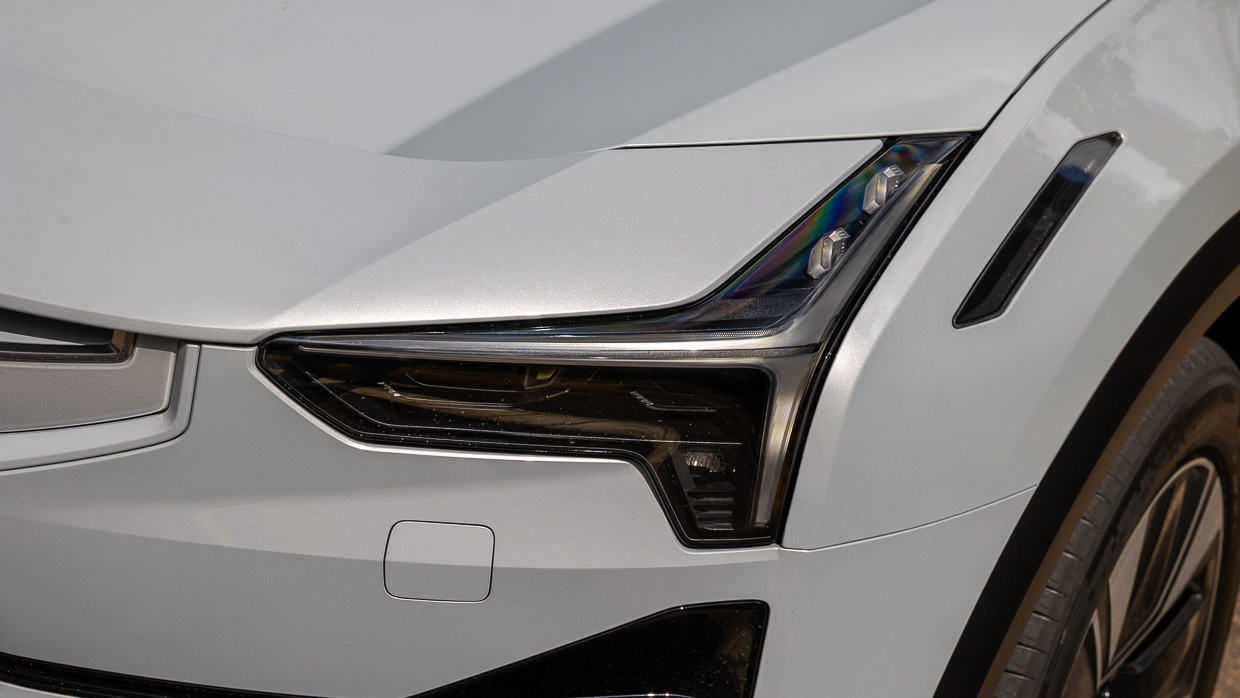
There’s a suite of sensors and cameras powering the P3’s active safety systems, with five exterior cameras for sensing, two eye-trackers, 12 ultrasonic sensors, and a front radar. An extra pair of exterior cameras give a feed to the 360-degree camera.
Polestar will offer more advanced autonomy from late 2025, when a Lidar pod becomes optional on the 3. For now, the systems are solid with consistent adaptive cruise control and lane-keep assist that work well.

There is also an auto lane-change assist program which, providing the way is clear and you’re travelling between 65-150km/h with Pilot Assist engaged, will guide the Polestar 3 into another lane when commanded with the indicator. Neat.
The Polestar 3’s biggest claim to fame is its driving range, eclipsing most others on the market with a 706km (15.1kWh/100km) rating in the combined WLTP cycle thanks to a massive 107kWh battery pack.
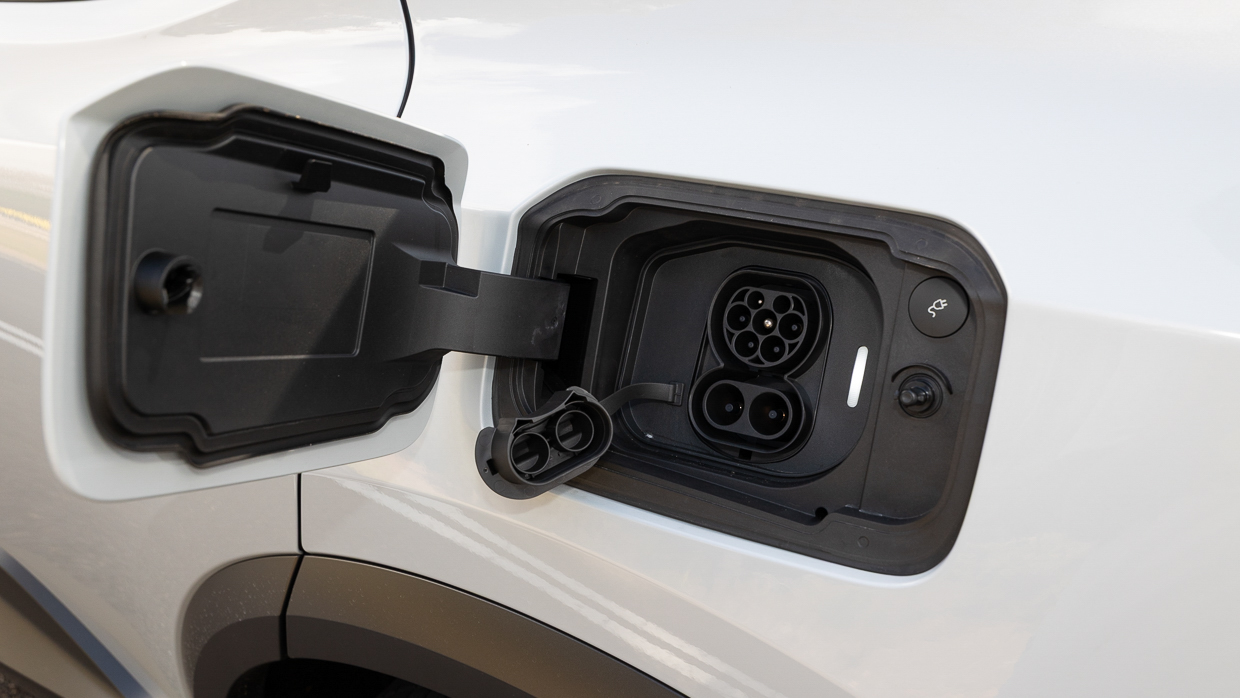
As is so often the case, hitting this number in the real world isn’t easy. Not only is the simulated lab test conducted at fairly constant, low speeds, but it’s done with climate control turned off. A rare occurrence in a country like Australia that always seems to be a little too hot or cold.
Our independent testing took in a more realistic blend of climate controlled urban and rural driving in the Polestar 3, with a few short jaunts on the motorway at 110km/h. The energy consumption was 18.3kWh/100km, for a real-world driving range of 585km.
Still solid, mind you, but a long way from the 700km-plus figure. Plus, at 110km/h on the motorway, the figure’s more like 19-20kWh/100km. This finding is consistent with other Polestar models we’ve driven in the past that often struggle to match their rated efficiency figures, where Tesla, BMW and Volkswagen Group products seem to get closer.
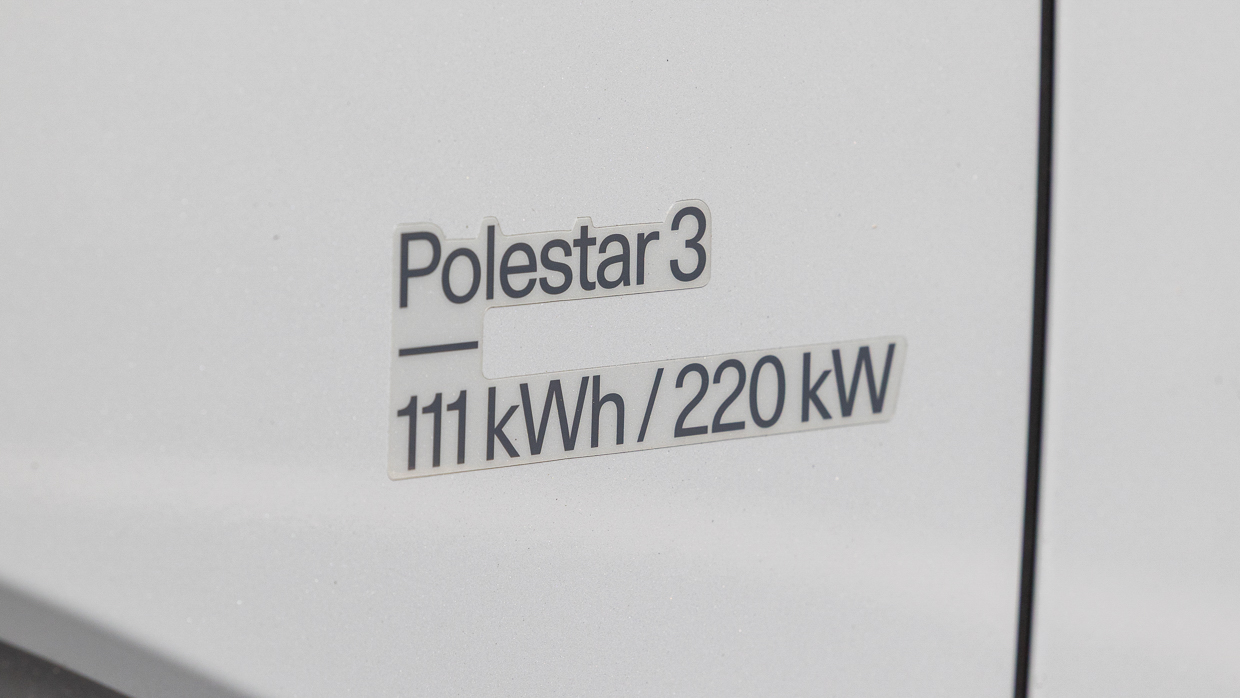
After charging up we took the P3 on a more flattering 150km run, returning 17.9kWh/100km, or 598km from a charge.
Charging’s a mixed bag on the Polestar 3, because although it only has 400-volt electrical architecture it still supports pretty rapid 250kW DC fast-charging. On a 16-minute session at a 350kW pylon, we saw a peak speed of 190kW, during which the Polestar 3 replenished an impressive 44.6kWh (23-61 percent) or 244km of driving range. That’s against Polestar’s claim of 30 minutes from 10-80 percent.
That said, AC charging leaves a little to be desired, being capped at 11kW. That means it’ll take 11 hours from flat to full, where some rivals (including the Audi Q6 E-tron) will take on electricity at 22kW.

Servicing is included for free for five years and 100,000km, and the warranty on the vehicle is five-years and unlimited kilometres. Polestar warrants its high-voltage lithium-ion (NCM) battery pack for eight years/160,000km.
Holding the accolade of Australia longest driving range electric car (at time of publishing) is impressive, but not enough alone for Polestar to sell shedloads of 3s — not that that’s the point of this attractive, niche luxury vehicle.
Luckily, the 3 backs up its decent distance abilities with oodles of visual sex, and impressively lively dynamics. We do miss the active air suspension of the twin motor, though, which although still firm, gets closer to magic carpet perfection than the jiggly Single Motor.
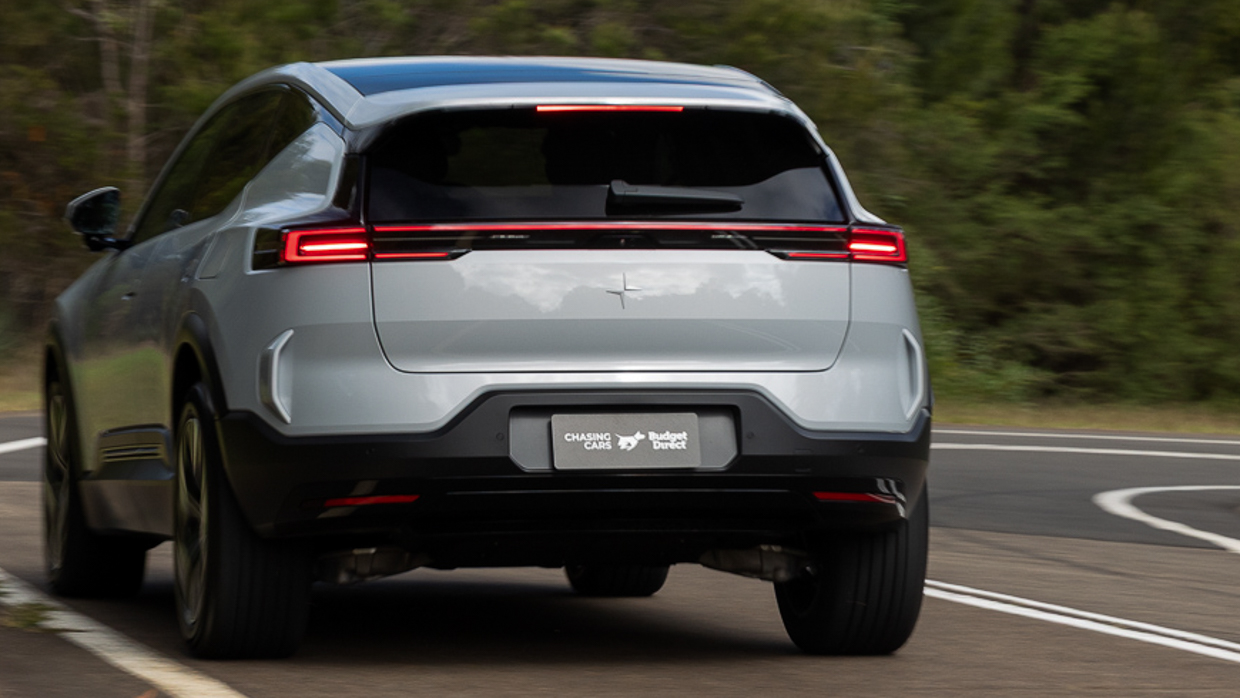
If you live near smooth roads and need to go long distances on a charge, the LRSM makes a bit of sense, but given how much range you still get in the Twin Motor, and the fact you need to option the Polestar 3 up anyway to get the best of it, we still reckon the AWD is the peachiest model in the range.
Key specs (as tested)
About Chasing cars
Chasing Cars reviews are 100% independent.
Because we are powered by Budget Direct Insurance, we don’t receive advertising or sales revenue from car manufacturers.
We’re truly independent – giving you Australia’s best car reviews.
The estimate provided does not take into account your personal circumstances but is intended to give a general indication of the cost of insurance, in order to obtain a complete quote, please visit www.budgetdirect.com.au. Estimate includes 15%^ online discount.
^Conditions Apply
Budget Direct Insurance arranged by Auto & General Services Pty Ltd ACN 003 617 909(AGS) AFSL 241 411, for and on behalf of the insurer, Auto & General Insurance Company Limited(ABN 42 111 586 353, AFSL 285 571).Because we don’t know your financial needs, we can’t advise you if this insurance will suit you. You should consider your needs and the Product Disclosure Statement before making a decision to buy insurance. Terms and conditions apply.
Indicative quote based on assumptions including postcode , 40 year old male with no offences, licence suspensions or claims in the last 5 years, a NCD Rating 1 and no younger drivers listed. White car, driven up to 10,000kms a year, unfinanced, with no modifications, factory options and/or non-standard accessories, private use only and garaged at night.
^Online Discounts Terms & Conditions
1. Discounts apply to the premium paid for a new Budget Direct Gold Comprehensive Car Insurance, Third Party Property Only or Third Party Property, Fire & Theft Insurance policy initiated online on or after 29 March 2017. Discounts do not apply to optional Roadside Assistance.
2. Discounts do not apply to any renewal offer of insurance.
3. Discounts only apply to the insurance portion of the premium. Discounts are applied before government charges, taxes, levies and fees, including instalment processing fees (as applicable). The full extent of discounts may therefore be impacted.
4. We reserve the right to change the offer without notice.